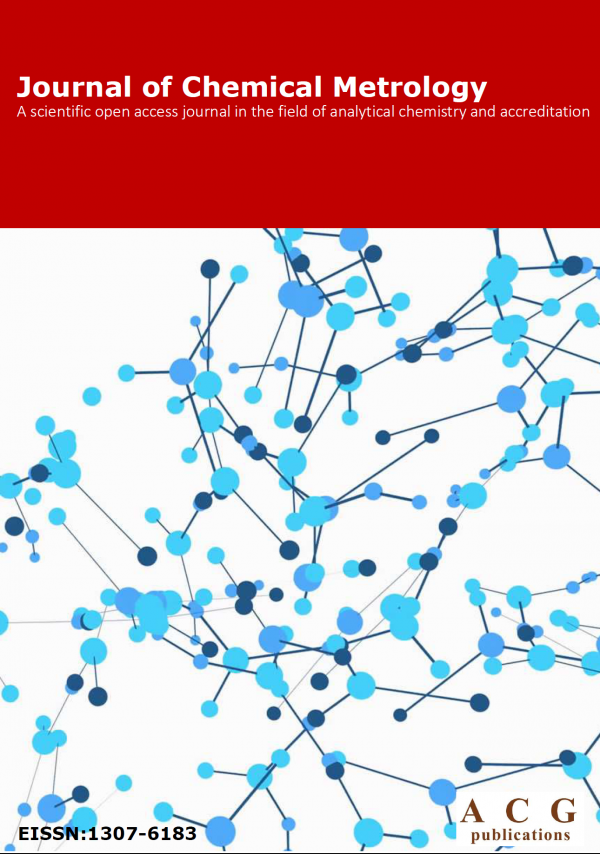Journal of Chemical Metrology
Year: 2009 Volume: 3 Issue:1
1) Determination and validation of valsartan and its degradation products by isocratic HPLC
Valsartan was subjected to different ICH prescribed stress studies. The stability-indicating assays were established by using isocratic RP-HPLC separation C18 column (250 mm length×4.6 mm internal diameter and 5 µm particle size) for both major degradants of valsartan by acid hydrolysis and by oxidation. The mobile phase comprising of methanol:water (70:30v/v, pH 7.2) was used in acid hydrolysis stability-indicating assay and the mobile phase comprising of methanol:water (60:40v/v, pH 7.2) was used in oxidation stability-indicating assay of valsartan. The flow rate was adjusted to 1.2 ml/min and detection was performed at 250 nm using a UV detector in both assays. The pure impurities were characterized by spectral studies. The degradants appeared at relative retention time (RRT) of 0.40 min and 0.27 min for acid hydrolysis and oxidation of valsartan, respectively. The validation studies established a linear response of the drug and satisfactory results for precision and recovery studies without interference with detection of valsartan. The LC-MS studies show m/zvalues of the peaks as 307.40 and 335.41. The pure impurities were isolated by appropriate route at laboratory scale. Prior to spectroscopic characterization of impurities, they were separated and purified using pH partitioning and/or extraction recrystalization and/or chromatographic techniques. A simple, precise, and accurate isocratic reversed-phase stability-indicating high performance liquid chromatographic assay method was developed and validated for determination of valsartan. Also identification of degradants was carried out and probable structures were confirmed.
Keywords Degradation degradant HPLC stability-indicating assay LC-MS Valsartan DETAILS PDF OF ARTICLE © 2009 ACG Publications. All rights reserved.2) Optimization of microwave assisted extraction of bioactive flavonolignan - silybinin
In this paper, a novel method of microwave assisted extraction (MAE) used for the extraction of a potent hepatoprotective bioactive silybinin, as a main flavonolignan from Silybum marianum is presented. The extracts were quantified for silybinin by HPLC. To prove the efficiency of the proposed MAE technique, it was compared with traditional methods like Soxhlet, maceration and stirring extraction. If the extraction yield obtained from MAE was to be considered as 100% performance level then, 12 h of Soxhlet extraction and 24 h of maceration and stirring extraction could attain 79.6%, 26.3% and 35% performance (in terms of extraction yield of silybinin) efficiency with high degree of reproducibility. The optimum extraction conditions were 600 W microwave power, 12 min extraction time (spread over two extraction cycles of 6 min each), 80% v/v ethanol as the extraction solvent, 20 min preleaching time and 25:1 (mL/gm) as the solvent to material loading ratio. A synergistic mechanism of heat and mass transfer was proposed to account for the accelerated extraction due to microwave.
Keywords Microwave assisted extraction silybinin soxhlet HPLC DETAILS PDF OF ARTICLE © 2009 ACG Publications. All rights reserved.